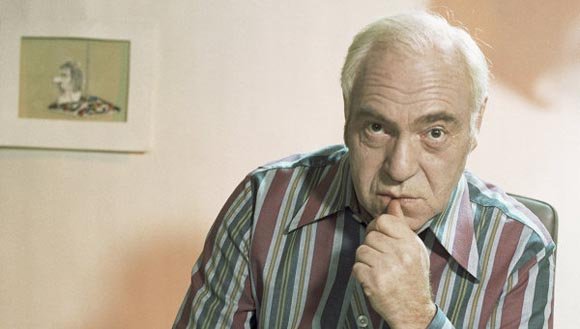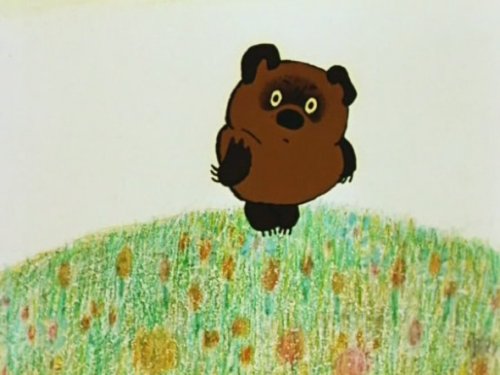Web exclusive

Nikita Khruschev’s liberalising ‘thaw’ of the late 1950s and early 60s manifested itself in Russian animation with the release of the groundbreaking Story of One Crime (1962). In Fyodor Khitruk’s debut film, the often-nauseating mix of socialist realism and Disney-inspired saccharine aesthetics which had defined Stalinist-era animation gave way to something completely new. The film was not aimed at children, but was a satire on the lack of privacy in sardine-like Soviet apartment blocks. The director used eccentric shapes and lines, flat perspective and spare movement; Story of One Crime looked like graphic design set in motion. It brought a sense of artistic freedom to the Soyuzmultfilm studio, and Russian animation was never the same again.
A master of concise visual humour and social commentary, Khitruk continued to make acclaimed work through his career. Man in the Frame (1966) was a critique of bureaucracy using a stylishly abstract mix of collage, photography and hand-drawn animation; Film, Film, Film (1968) described the struggles of making a film within the state-run industry (and is surprisingly relevant to filmmakers working in studio systems in the West even now); and The Island, winner of the Palme d’Or in 1974, presented an individual’s alienation in capitalist society in a way that’s as witty as it is melancholy.

Khitruk’s Winnie the Pooh.
Khitruk’s work for children is no less notable and influential, with the most famous example being a series of Vinni-Pukh films, for many Russians the definitive version of A.A. Milne’s Winnie the Pooh character. Khitruk added his own deft and endearing touches, including a flattened left ear – the one the bear sleeps on, of course.
As film funding dried up after the collapse of the USSR, Khitruk dedicated himself to education and founded the animation film school SHAR Studio with two other giants of Russian animation, Yuri Norstein and Eduard Nazarov. Ever a tireless enthusiast for his craft, a gifted teacher and a larger-than-life presence, Khitruk left an immense void in Russian animation after his death in December 2012.
Also in the March 2013 issue of Sight & Sound

Obituaries 2012
Bob Mastrangelo’s survey of the film greats and lesser-knowns who left us during 2012, with new obituaries of Herbert Lom, Sylvia Kristel, Yamada Isuzu, Seyfi Teoman and child actors of the silent era.





